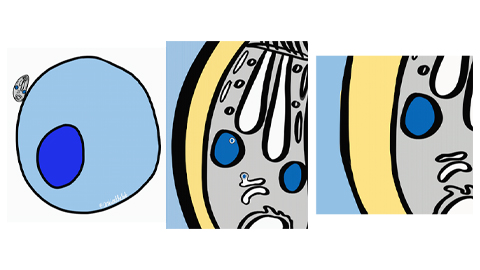There is no ‘one weird trick’: A look into the life sciences job-seeking landscape
The other day a friend sent me a New York Times opinion piece about how difficult it is to find a job these days. The author spoke with people who sent out 400 and 500 applications with nothing to show for it. Having just gone through a job search myself and talked to other job seekers throughout my process, it seems the author didn’t pick outliers.
Job hunting is hard right now.
It’s confusing though; we have good employment numbers coming from the government bodies that track this stuff, so shouldn’t that mean job hunting is easy now?
Well, no. The jobs that are being created don’t necessarily match the skills and desires jobseekers have. This has been called the “Great Mismatch.” Companies can be struggling to hire candidates that fit their needs, and jobseekers can be struggling to find a job at the same time.
There’s also a second layer of difficulty specific to the entry-level job market: Entry-level jobs are not quite entry level anymore. In 2021, a study showed that 35% of entry-level jobs required experience. In the life sciences, I don’t think I’ve seen a single job where simply having a college degree in biology was enough. Getting a Ph.D. or doing a postdoc doesn’t seem to be enough for Ph.D.- or postdoc-requiring jobs either.With applications easier to send via LinkedIn or other job sites, employers are getting more applications. Which means you have to try even harder to set yourself apart from hundreds of other people with similar backgrounds and skill sets.
Perspective from the other side

To get a perspective on the biology job scene, and maybe get some pointers for how to find a job, I spoke with Daniela Sharma, who has taught college students about careers and worked as a recruiter in the life sciences, among many other scientific and administrative roles.
“It’s completely different now,” Sharma said, explaining that someone who had a job for 10 years and now needs to look for a new position is going to find a very different landscape.I had subconsciously hoped Sharma, would have the secret to getting a job. She’d been on the inside, so maybe she’d know that one skill everyone needs or the one thing to do to your resume to make it get a response. But her view was more realistic than that.
“There is no ‘one weird trick’ for getting a job,” she said.
And there are no hard and fast rules either. She described the landscape as ever shifting; one approach or selling point won’t necessarily last. She said lot of people ask her, “Someone told me this [advice], is it true?”
Her response: “With the job market changing so quickly in the past year, I think information is getting old so quickly.”
What might have been good advice a year or a few months ago could be out of date now.Are there any important skills that will make you more hire-able?
“I have found that, talking to a lot of people, companies are very gossipy,” Sharma said.
Meaning that potential employers might follow each other toward trends with a hint of FOMO: One company has success with an approach or type of research, and it spreads, and suddenly everyone is looking for a certain type of candidate to fill a specific need. Such trends are impossible for an outsider new to the field to follow.
“Do not beat yourself up or feel bad,” Sharma said. “It’s a full time job to follow these trends. Analysts are working hard to understand them.”
So what can you do?
Use the resources and connections at your current or former institutionSharma has seen how useful it can be for a candidate to take advantage of their career office if they are a student or have any ties to an academic institution.
Often relationships have been established between academic institutions and disease advocacy foundations, biotech companies, medical writing firms and more, whether that’s because alumni work there, these entities have spun off from the school or they are just in the area.
“Be annoying and use whatever they have,” Sharma said.
Working through a relationship like this can set you apart from other candidates and even let you in on opportunities that aren’t public. This can help you avoid being one of 400 anonymous applicants for a job.
“The interaction between universities and employers has grown closer,” Sharma said, “and I see it as a continuing trend, and I don’t think the size or location is the limiting factor.”
Get experience as soon as you canInternships and co-ops (many of which you can also find through an academic institution’s career office) are a way of learning — and proving that you have — the skills you need in your field of choice. And this isn’t just for undergrads anymore. Ph.D. students can — and maybe should — do internships too, unless they are certain they want to stay exclusively in academia. Once you’ve graduated, you’ll be competing against people who have these experiences in the field.
Similarly, working on the side, even if not in an official internship, can help you gain experience.
Classes are another source of experience, whether at your institution or somewhere external like these classes offered by MassBio.
Make the most of every interviewIf you get an interview, it’s a chance to make a connection. Even if you don’t get the job offer after the interview, it isn’t necessarily the end, so stay polite and positive in your interaction.
“It’s good to make those connections,” Sharma said. “You never know what could happen. You could still be in the running. They might say, ‘Oh, not at this time,’ but you can reconnect; things change frequently, much more rapidly than you would expect. You don’t know why they didn’t choose you, maybe a slightly different focus, or skillset or metric. That might be different three months later.”
Do advance research on companiesI know it’s time consuming. If you are going to send out 200 applications, do you really have time to look up every company? Well, try.
“If you send bulk applications, you’re gonna get bulk responses,” Sharma said, and she confirmed, “Ghosting is the standard.”Sharma gave examples of what an applicant could look up about a company to get a sense of it, and how to include that information in a cover letter or interview.
“Do they have a newsletter? Do they post on LinkedIn? Make mention that you saw the company did xyz,” she said.
You might mention, “Congrats on your phase 3 trial” or something that shows you took a moment and cared and didn’t just paste your same old cover letter 200 times.
Keep your LinkedIn up to date
As a recruiter, Sharma sometimes viewed 100 applications a day, but she also did searches on LinkedIn to find candidates. Recruiters can only find you and learn about what you have to offer if you’ve clearly written that information. That means you need to write a profile that will show up if a recruiter searches key skills and job titles. People with profiles that have a good “about” section, a clear description of work and projects, and a good photo are more likely to get contacted. Even students should fill out this information.
“Describe projects you did for class,” Sharma advised students trying to get their first job.
You need clear information on your profile because how else can a stranger figure out if you’re a potential good fit? It’s not feasible to talk to everyone and find out. And there are other reasons.
“Sometimes we can’t even tell if it’s a real person,” Sharma said.
With AI and bots and the ever-accelerating arms race between people and automation, make sure your profile is a good representation of you, the human.
Final thoughts
Sharma wanted to pass on encouragement to all job seekers. “It’s ever changing,” she said of the landscape, “so I don’t want anyone to feel bad.”

Enjoy reading ASBMB Today?
Become a member to receive the print edition four times a year and the digital edition monthly.
Learn moreFeatured jobs
from the ASBMB career center
Get the latest from ASBMB Today
Enter your email address, and we’ll send you a weekly email with recent articles, interviews and more.
Latest in Careers
Careers highlights or most popular articles

Sketching, scribbling and scicomm
Graduate student Ari Paiz describes how her love of science and art blend to make her an effective science communicator.

Embrace your neurodivergence and flourish in college
This guide offers practical advice on setting yourself up for success — learn how to leverage campus resources, work with professors and embrace your strengths.

Upcoming opportunities
Apply for the ASBMB Interactive Mentoring Activities for Grantsmanship Enhancement grant writing workshop by April 15.

Quieting the static: Building inclusive STEM classrooms
Christin Monroe, an assistant professor of chemistry at Landmark College, offers practical tips to help educators make their classrooms more accessible to neurodivergent scientists.

Unraveling oncogenesis: What makes cancer tick?
Learn about the ASBMB 2025 symposium on oncogenic hubs: chromatin regulatory and transcriptional complexes in cancer.

Exploring lipid metabolism: A journey through time and innovation
Recent lipid metabolism research has unveiled critical insights into lipid–protein interactions, offering potential therapeutic targets for metabolic and neurodegenerative diseases. Check out the latest in lipid science at the ASBMB annual meeting.

